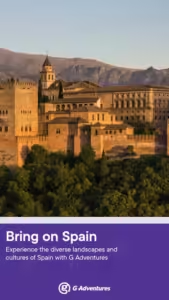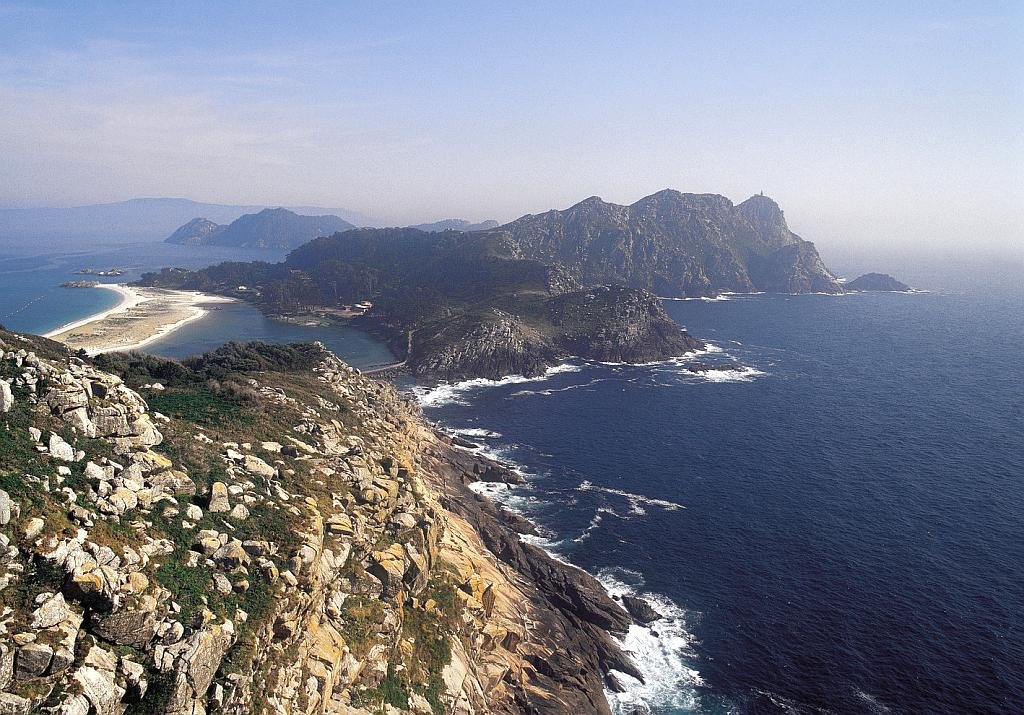Walking and wildlife holidays in Galicia
- Capital: Santiago de Compostela.
- Area: 29,575 km²
- Provinces 4: La Coruña, Lugo, Pontevedra, Ourense

Galicia is known in Spain as the “land of the 1000 rivers”. The people of Galicia are known as “Gallegos“.
Geographically situated just above Portugal in the north western corner of Spain and facing both the Atlantic Ocean and the Cantabrian sea.
This part of the country has an economy based on fishing, farming, agriculture and more increasingly wildlife tourism as can be seen in this video.
Galicia is frequently described as “Green Spain”, a result of its temperate climate and elevated rain fall. The landscape is mountainous and peppered with manmade plantations of pine and eucalyptus.

The culture which left its imprint in Galicia is Celtic, while Romans left the walls of Lugo, the bridge of Ourense, and the Tower of Hercules.
In the Middle Ages, the discovery of a tomb, that of the Apostle Santiago (Saint James), brought many people. Thousands of pilgrims made their way to the cathedral of the newly founded town named Santiago de Compostela, and the world-famous Way of Santiago was formed.
The Way is flanked with numerous churches, monasteries and chapels of historical value.
Looking for a hotel in Galicia?
With over 12,000 accommodation choices in Galicia over at Booking .com there are certainly plenty of options. From quiet retreats in Sarria to luxurious hotels in Santiago de Compostela.
Tours in Galicia from Viator
Galicia has a vast array of sites to visit and enjoy. Below are some of the options listed on the Viator website. (We recieve a small commission if you book a tour which doesn’t cost you more and helps us to keep Wildside Holidays up to date with the best information.)
Natural Parks in Galicia

Walking and wildlife holidays in Galicia
1 Fragas del Eume Natural Park The Fragas del Eume Natural Park is home to one of Europe’s best-preserved examples of a riverside temperate rainforest where oak such as (Quercus robur and Quercus pyrenaica) are dominant.The forest follows the course of the River Eume and Fraga is a Galician word for “natural or untouched virgin woodland”. The European Union has also recognised the park as a Site of Community Importance.
2 Dunas de Corrubedo y lagunas de Carregal y Vixán Natural Park The Dunas de Corrubedo y lagunas de Carregal y Vixán Natural Park covers about 10 km2 and is situated at the end of the Barbanza Peninsula between the Arosa and the Muros y Noya estuaries. Its international importance as a wetland has been recognised as a Ramsar site and the European Union has also included it within a Special Protection Area.
3 Islas Atlanticas National Park In Ons don’t miss the mysterious “furnas”, granite sea caves cut by the waves, such as the mythical “Burato do Inferno”, which was “believed to go all the way down to hell, and on stormy nights the voices of the dead could be heard”.
4 Monte Aloia Natural Park Located in the south of Pontevedra province the Monte Aloia Natural park (the first natural park in Galicia) is basically the summit of the Sierra de Galiñeiro mountain range.
5 Baixa Limia Serra do Xures Natural Park and, on the Portuguese side of the border, the Peneda-Gerês National Park are now joined to create the Gerês-Xurés Transboundary Biosphere Reserve (RBTGX) With an area of 267,958 ha, of protected territory in two natural spaces divided between Spain and Portugal.
6 Monte o Inverndeiro Natural Park can only be described as stunning with its peaks and valleys covered in grasses, large extensions of scrub, woodland and riverside habitat. The area receives maximum protection and admits a maximum of just 30 visitors per day so a permit from the park authorities is required in order to enter the protected area. (Ask about this in your hotel or other accommodation, maybe they can get the permits for you.)
7 Serra da Enciña da Lastra Natural Park has outstanding holm oak woods, ancient chestnut groves and Mediterranean scrubland with fields of wild thyme and flowering plants endemic to limy soil and more than 25 species or orchid. The gorges and sheer river passes are the habitats of birds of prey and other birds which make the park an interesting ornithological refuge. It has the largest concentration of nesting birds in Galicia and there are also large colonies of bats residing in the caves.
Bras Rodrigo and his haunting music
Many years ago they said that in the Ría d’Avilés, in Viévares, there was a splendid city that, due to the vanity of its people, was swallowed by the waters.
The village elders say that on the night of San Juan, the bells of the submerged city of Arxentola still ring This legend of San Xuan de Nieva is what inspired Bras Rodrigo to compose this beautiful song, adorned with a beautiful landscape in the background: Vallina beach in Cudillero, Xagó beach and the San Xuan de Nieva lighthouse in Gozón.
Frequently Asked Questions: Walking and Wildlife Holidays in Galicia
Galicia sits in Spain’s northwest, just above Portugal. It’s bordered by both the Atlantic Ocean and the Cantabrian Sea. Known as “Green Spain,” Galicia has a temperate climate, high rainfall, and more than 1,000 rivers. Its terrain is mountainous, with extensive pine and eucalyptus plantations.
Galicia’s economy has traditionally relied on fishing, farming, and agriculture. In recent years, wildlife and nature-based tourism have grown significantly, reflecting the region’s rich biodiversity and scenic landscapes.
Galicia has deep Celtic roots and significant Roman heritage, seen in monuments like the walls of Lugo and the Tower of Hercules. The region became a major Christian pilgrimage site in the Middle Ages after the tomb of the Apostle Saint James was discovered. This led to the creation of the Way of Santiago (Camino de Santiago) and the founding of Santiago de Compostela.
The Way of Santiago is one of the most famous pilgrimage routes in the world. It attracts thousands of pilgrims each year who walk to the cathedral in Santiago de Compostela. The route is lined with historic churches, monasteries, and chapels, making it both spiritually and culturally significant.
Galicia offers several protected natural areas ideal for walking and wildlife observation:
Fragas del Eume Natural Park: Ancient riverside oak forests and one of Europe’s best-preserved temperate rainforests.
Dunas de Corrubedo: A Ramsar wetland and dune system recognised as a Special Protection Area.
Islas Atlánticas National Park: Island cliffs and granite sea caves like the mythical “Burato do Inferno.”
Monte Aloia Natural Park: Galicia’s first natural park, atop the Sierra de Galiñeiro mountains.
Baixa Limia–Serra do Xurés: Part of a cross-border biosphere reserve with Portugal.
Monte o Invernadeiro Natural Park: Highly protected wilderness with limited daily access (30 permits per day).
Yes, Monte o Invernadeiro Natural Park requires a visitor permit due to conservation efforts. Hotels and local guides can often assist in obtaining one.
Galicia’s varied ecosystems host birds of prey, nesting seabirds, bats, wild orchids, and many endemic plant species. It’s especially rich in birdlife, making it ideal for ornithology enthusiasts.
There are over 12,000 accommodation options listed on Booking.com, from quiet country stays to upscale hotels in Santiago de Compostela. For guided experiences, platforms like Viator offer wildlife tours, walking holidays, and cultural trips. Bookings through Wildside Holidays help support the site without extra cost to the user.
A Galician legend tells of a city called Arxentola that was swallowed by the sea due to its people’s vanity. On the night of San Juan, locals say you can still hear the city’s bells. This myth inspired Bras Rodrigo’s music, filmed along Galicia’s coastal cliffs and lighthouses.
About the author of this article.
I’ve been living in this lovely area of Western Andalucia for the last 20 years or so and dedicate most of my time to the running of English language tourist information websites for the towns of Cádiz, Ronda, Grazalema, the famous or infamous Caminito del Rey, and also Wildside Holidays, which promotes sustainable and eco-friendly businesses running wildlife and walking holidays in Spain.

